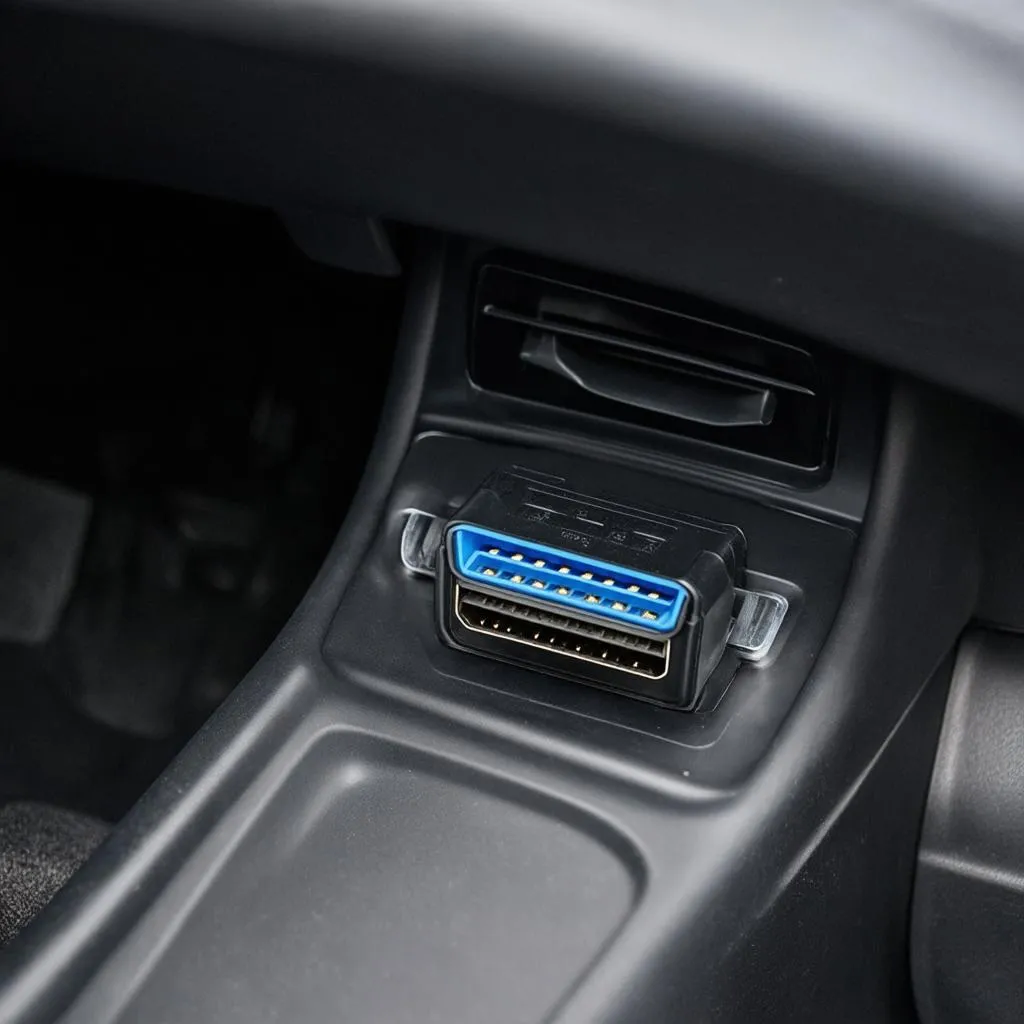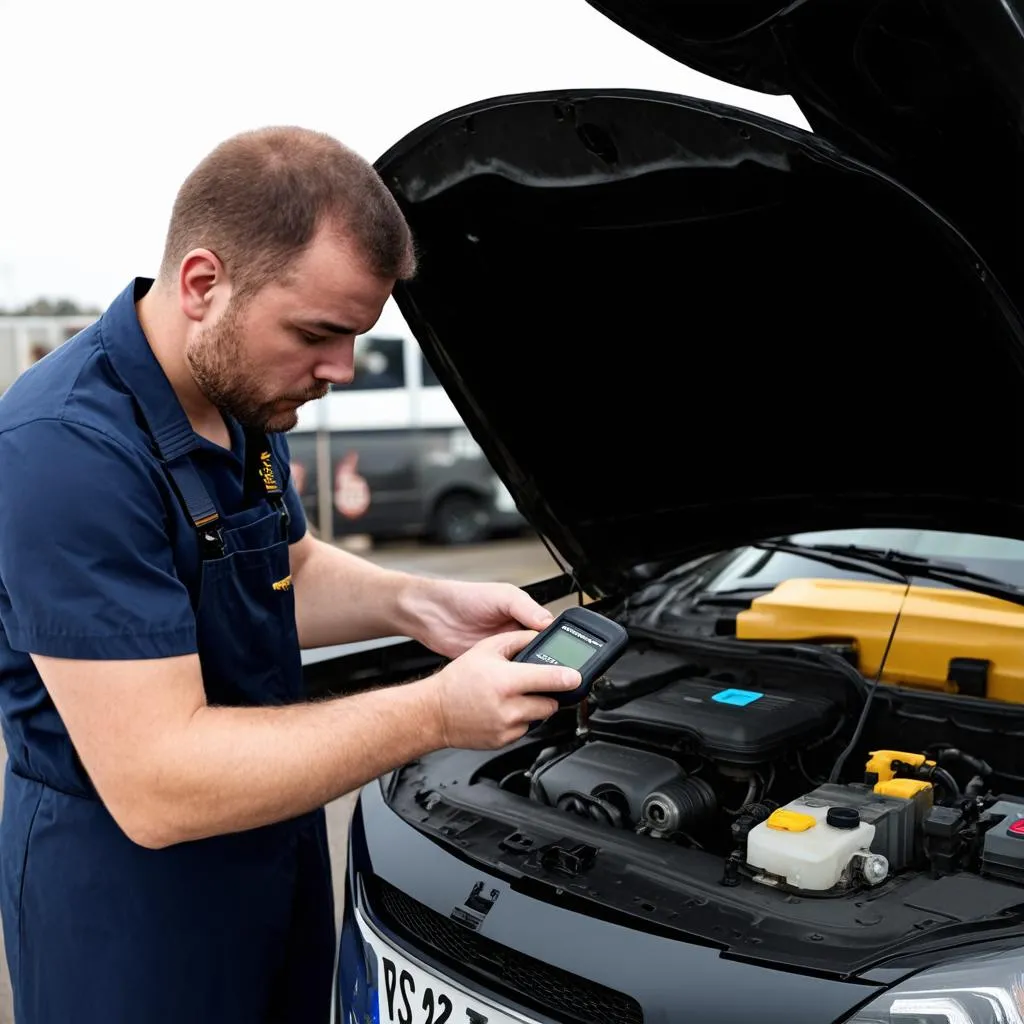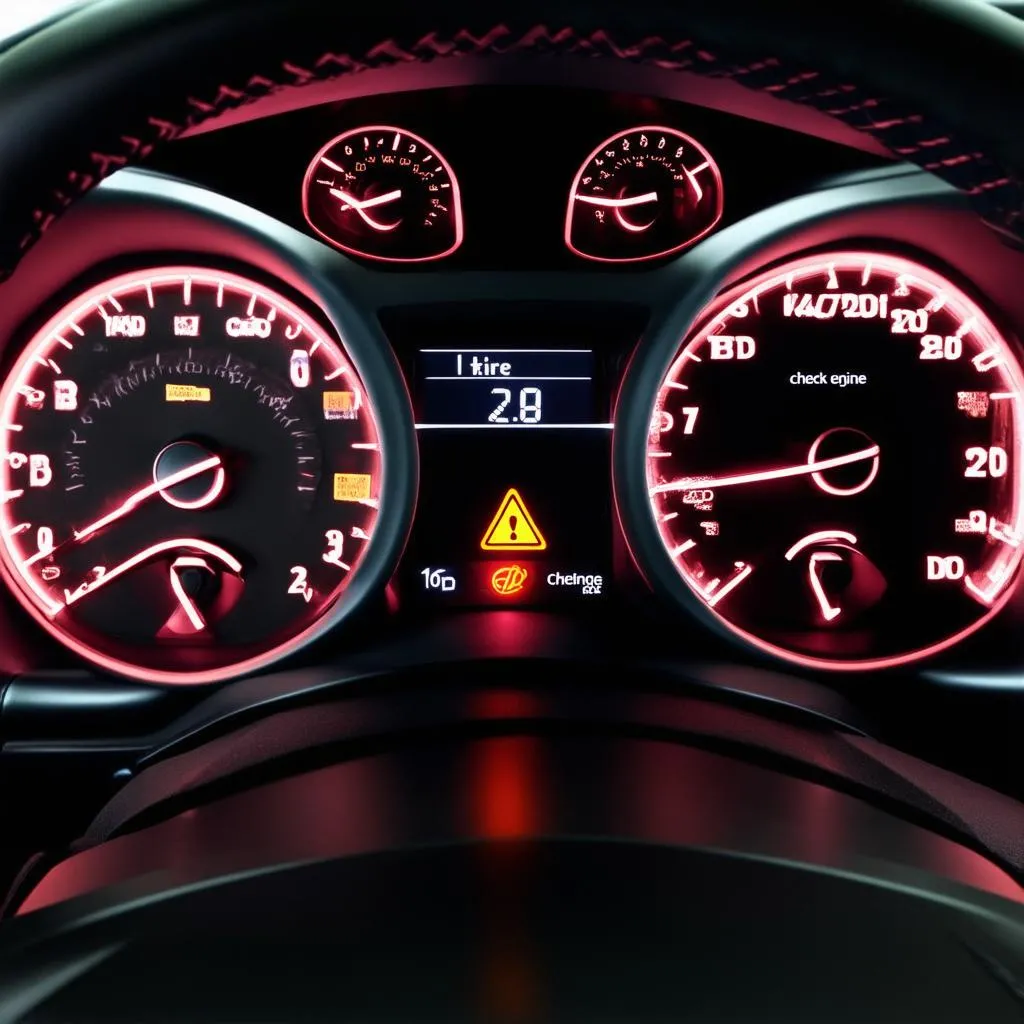Have you ever been driving and suddenly a strange light appears on your dashboard? You know, the one that sends a shiver down your spine and makes you wonder if your car is about to transform into a Transformer? Fear not, fellow driver, for that, my friend, is the mysterious OBD system trying to tell you something.
What is this Obd In Automobile?
OBD stands for On-Board Diagnostics. Think of it as your car’s very own built-in mechanic, constantly monitoring its health and performance. Just like a doctor uses various tools to diagnose a patient, the OBD system uses sensors placed throughout your vehicle to gather data on everything from engine performance and emissions to airbag systems and even your car’s security.
But how does it work? Imagine a network of tiny spies strategically placed throughout your vehicle. These “spies” are the sensors, and they are constantly reporting back to the OBD system, whispering secrets about your car’s well-being.
Delving Deeper: OBD II and the Power of Diagnostics
Now, you might be wondering, “What can I actually do* with this information?” That’s where the OBD-II port comes in. This little port, often located under the dashboard on the driver’s side, is your gateway to unlocking your car’s inner workings.
With the right tools, like a Dealer Scanner for European Cars, you can tap into the OBD system, read those diagnostic trouble codes (DTCs) that your car has been patiently storing, and decipher what that pesky check engine light is really trying to tell you.
Think of it this way: your car is speaking to you in code, and the OBD-II port is the translator.
 OBD Port Location
OBD Port Location
Benefits of Understanding Obd In Automobiles:
- Early Detection: Just like regular check-ups at the doctor can catch problems early on, the OBD system can help identify potential issues before they become major (and expensive!) headaches.
- Cost Savings: Knowing what’s wrong with your car before you take it to a mechanic can save you from unnecessary repairs and inflated costs.
- Improved Performance: Monitoring your car’s performance through the OBD system can help you identify areas for improvement, such as fuel efficiency.
- DIY Diagnostics: For the mechanically inclined, the OBD-II port opens up a world of DIY diagnostic and repair possibilities.
 Mechanic Diagnosing Car with OBD Scanner
Mechanic Diagnosing Car with OBD Scanner
OBD: Not Just for Mechanics
While the OBD system might seem intimidating at first, it’s a valuable tool for any car owner. Even if you’re not a gearhead, understanding the basics can empower you to take control of your car’s maintenance and repair.
Frequently Asked Questions:
Q: Do all cars have an OBD port?
A: Most cars manufactured after 1996 are equipped with an OBD-II port.
Q: Can I use any OBD scanner on my car?
A: While there are generic OBD scanners available, using a scanner specifically designed for your car’s make and model is recommended for the most accurate results.
Q: Can I clear my own check engine light using an OBD scanner?
A: Yes, but it’s crucial to understand why the light is on in the first place. Clearing the code without addressing the underlying issue could lead to further damage.
Q: Are there any downsides to using an OBD scanner?
A: As John Smith, a seasoned mechanic with over 20 years of experience, states in his book “The Car Whisperer,” “The only real downside to using an OBD scanner is the potential for misinterpretation of data. It’s important to remember that the scanner is just a tool, and it’s up to the user to interpret the information correctly.”
OBD and the Human Connection: A Symphony of Systems
Interestingly, the OBD system has a parallel in the human body. Just as sensors in a car monitor various systems, our bodies have sensory receptors that constantly gather information about our internal environment. These receptors send signals to our brains, which then interpret the data and initiate appropriate responses.
In a way, our bodies are like high-tech vehicles, constantly undergoing self-diagnosis and adjustment. And just as a skilled mechanic can use the OBD system to diagnose and repair a car, a skilled medical professional can use their knowledge and tools to diagnose and treat the human body.
 Car Dashboard with Warning Lights
Car Dashboard with Warning Lights
Take Control of Your Car’s Health
Whether you’re a seasoned mechanic or a car novice, understanding the OBD system can empower you to take control of your car’s health and maintenance. It’s like having a direct line of communication with your vehicle, allowing you to address issues before they become major problems.
Need help deciphering those cryptic OBD codes or choosing the right diagnostic tool for your car? Don’t hesitate to reach out to us on Whatsapp at +84767531508. Our team of auto experts is available 24/7 to provide support and guidance.
Looking for more insights into the world of automotive technology? Check out these related articles:
- Understanding OBD-II Tuning Software
- FIXD: Monitoring Your Car’s Condition Through OBD
- The Importance of the Right OBD Connector
- Tesla Model Y and the OBD Port
- HRV and the OBD Port
Remember, knowledge is power, especially when it comes to keeping your car running smoothly. So embrace the world of OBD and unlock the secrets of your automobile today.